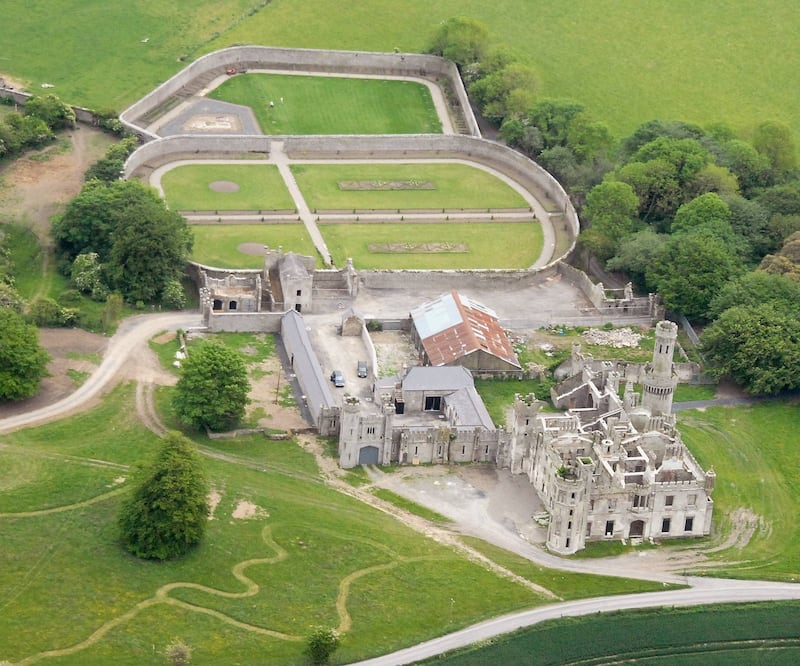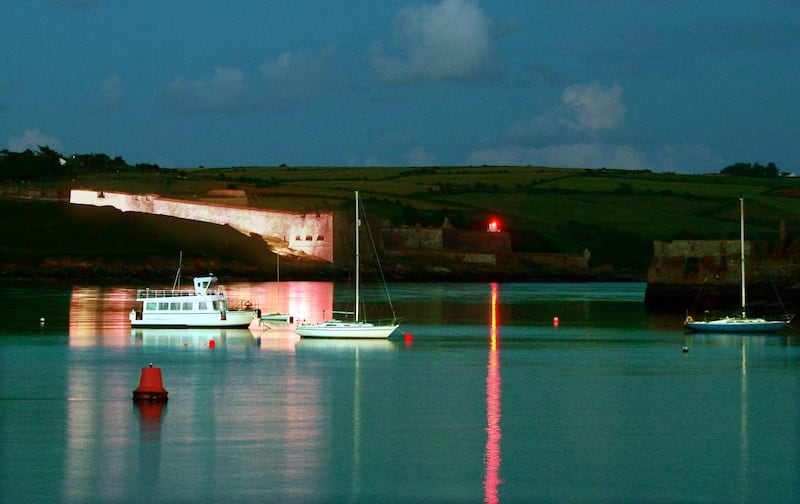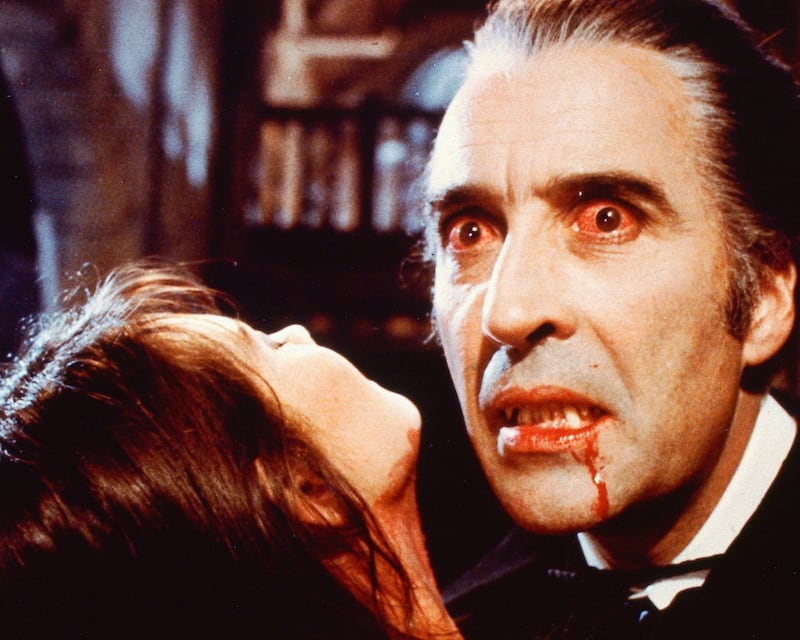In some parts of the country, anguished shrieks of an unearthly kind can still be heard in the dead of night, chilling the listener to the bone.
Everybody knows the word ‘banshee’ now, after the huge success of the Martin McDonagh film, but it remains a cry linked to our dim distant Celtic past – a netherworld where spirits, demons and spectres haunt those eerie places where terror lurks.
Welcome to the world of ‘ghost tourism’, strange structures where the paranormal lurks, ancient mansions where foul deeds were done, spooky castles where the dead roam and cursed corners where phantoms command the night. In the Ireland of 2023, walking with ghosts has become big staycation business.

Ireland’s Most Haunted House Having the Devil himself as a guest at cards is certainly a unique boast, the very one that’s made Loftus Hall world famous. Built in 1350 at the height of the Black Death, the grand mansion perched on Wexford’s windswept Hook Peninsula, is a gothic pile with serious credentials for top billing in the ghost tourism sector.
READ MORE
Legend has it that, one wild night in 1760, a stranger knocked at the great oak door, and was asked in by owner Charles Tottenham.
Invited to bide his time until the storm passed, the charming stranger took a seat at the card table with the family. During the game, however, the Tottenham’s daughter Anne dropped a card, and bent beneath the table to retrieve it. To her utter terror, she saw that the stranger had cloven hooves where his feet should be.
Rearing back on her chair screaming, she looked straight into the demonic crimson eyes of Satan, who then levitated above the horrified family before shooting through the ceiling and out the roof in a ball of flame. A mysterious mark on the mansion’s roof still exists as evidence of the Devil’s ghastly visitation.
Former owner Aidan Quigley, who recently sold the house to a hotel consortium, said: “There wasn’t a day at Loftus Hall that I didn’t feel that there was something or someone there with me.”
Hellish Doings In The Dublin Mountains
Montpelier Hill is an old hunting lodge, dating back to the 18th century, in a scenic part of the Dublin mountains. Despite its peaceful sounding name, however, it gained global notoriety as a haven for the most debauched and diabolical happenings amongst a membership dedicated to death and damnation.
Established in 1735 on the site of a Neolithic passage tomb by the Earl of Rosse, Richard Parsons, the structure eventually drew a select coven of wealthy aristocrats and landowners keen to sample the wilder side of life.
The Hell Fire Club was founded upon a simple motto – ‘Anything Goes’ – one that its members took to heart in their ultimate aim of summoning Satan to their meetings. Led by their president, ‘The King of Hell,’ members enthusiastically dabbled in black magic and conducted black masses.
Stories abound of animal sacrifice and cannibalism, with a 14-year-old virgin mutilated and defiled beneath a full moon. Visitors have experienced an oppressive atmosphere, foul odours and anguished wailing as evening falls.
A Banshee’s Curse
Viewed from a distance, it’s easy to imagine the glory days of Duckett’s Grove, the centre of a 12,000 acre Carlow estate commanded by an impressive Gothic pile. It was built in 1745 by John Dawson Duckett, a peer of the realm, whose lineage dated back to William the Conqueror.

As was often the case amongst the gentry, Duckett kept a young mistress – who tragically died in a riding accident on the estate. Her mother, stricken with grief, vowed vengeance upon the Duckett family and called down a banshee curse to bring death and financial ruin upon the noble family. Shortly afterwards, a visiting lady heard the anguished cry and immediately died near the stables.
On another occasion, a gardener also heard the wailing and discovered his mother dead the next morning. In 2011, the ruined castle was visited by the American paranormal television series, Destination Truth, who managed to film much unexplained phenomena, including strange figures, light anomalies and hollow sounds from deep in the basement.

One of Ireland’s most enduring ghost stories centres on the White Lady of Charles Fort in Kinsale – an ill-fated love that ended in a terrible tragedy. The daughter of the fort’s strict governor, the aptly named Wilful, married a dashing officer called Sir Trevor Ashurst.
Shortly after their wedding, Wilful and Sir Trevor were walking the walls of the fort when, in a case of mistaken identity, the newly married officer, who had temporarily replaced a sentry and fallen asleep, was accidentally shot and killed by his commanding father-in-law. Discovering her husband’s fate and consumed by grief at her loss, the now widowed bride threw herself from the fort’s lofty tower, falling to her death on the rocks far below.
Thereafter, Wilful’s ghost has wandered Charles Fort wearing her wedding dress, wailing in the night as doors crash open and close at her approach. A young medical officer on duty in 1922 was dragged from his bunk and narrowly escaped death after being thrown down a stairs by a young woman in a billowing white bridal robe.

Dracula and a tyrannical Irish dwarf
Everyone has had their own Dracula moment, that instant when those small neck hairs stand erect in sheer terror. Whether you squirmed in fear during a Hammer Horror film double bill, or covered your eyes at Gary Oldman’s modern blood-lusted version, this vampire created by Dublin-born Bram Stoker has always found a way to unravel our deepest fears.
Rather than the generally held view that the terrifying creation came from a myth of Transylvanian origin, it could well be that Stoker found his inspiration in the lesser known 6th century legend of Abhartach – Ireland’s own Dracula.
Abhartach was a tribal ruler in an area located near the Derry town of Garvagh, a misshapen and tyrannical dwarf possessed of magical powers whose brutal reign of terror eventually forced his terrified subjects to hire a mercenary called Cathain to assassinate him.
Cathain accomplished his task “with a mighty heft of his sword” – only for the fearsome dwarf to emerge from his grave the next day demanding a bowl of blood from the wrists of his subjects to “sustain his vile corpse”.
Consulting the druids, Cathain discovered the minuscule monster had now become one of the ‘marbh bheo’ – the walking dead – who could only be killed with a stake of yew wood through the heart, then buried upside down beneath an enormous headstone.
Cathain eventually managed to vanquish his demonic quarry, with the monument giving the townland its name – Slaghtaverty. Adding further lustre to the myth, an attempt to clear the land around the grave by council workers in 1997 resulted in three chainsaws malfunctioning every time the blade came in contact with the thorn tree.
Attaching a steel rope to their tractor in an effort to move the enormous gravestone, the rope suddenly snapped completely severing a workman’s arm at the elbow and drenching the gravesite with blood. It was the last effort made to interfere with what is now known as the Slaghtaverty Dolmen.
Most tellingly, the blood sacrifice demanded by Abhartach translates in Irish as ‘droch-fhoula’ – bad blood – pronounced phonetically as droc’ola. Say it slowly . . .















